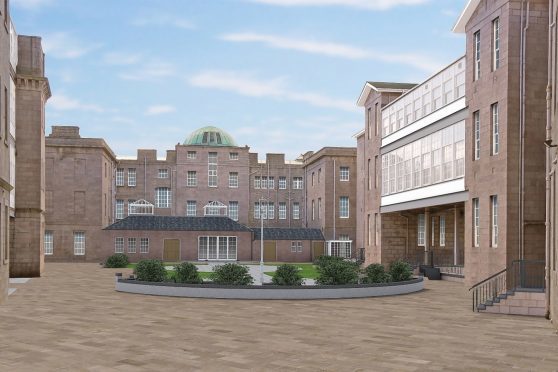The company behind ambitious plans to convert a historic Aberdeen hospital into a hotel is seeking an operator for the new venture.
Four A-listed buildings at Woolmanhill will be turned into a 52-bedroom “boutique” hotel along with around 40 homes under the plans submitted by CAF Properties – owned by developer, Charlie Ferrari.
The hospital closed its doors for the final time in April, with work expected to begin in June.
Nine historic pictures of life at Woolmanhill Hospital from through the years
However, signs advertising a “landmark hotel development opportunity” have been placed around the site, indicating the developer is still looking for a firm to take it on.
And the new project could face stiff competition from another high-end rival in the city.
A Sandman Signature hotel is being constructed in what was the Robert Gordon University school of computing in St Andrew Street and there are similar projects in the pipeline, such as the creation of the new Marriott planned for the Marischal Square development.
But there could be green shoots for the beleaguered sector, which has been hit hard by the oil and gas downturn.
In June, market specialist LJ Research found occupancy levels in the Granite City grew to 64.8% in April, from 62.6% a year earlier.
Last night, council leader Jenny Laing said the Woolmanhill plans were key to the City Centre Masterplan.
She added: “From the council point of view, I think this shows how the public sector has done a lot of the heavy work and now the private sector is stepping in with its own investment.
“This was always the aim of the masterplan – for both sectors to work together.”
The original hospital building on the site was begun in 1740, designed by William Christall. But Aberdeen’s most famous architectural son, Archibald Simpson, designed the Simpson Pavilion in 1833.
Aberdeen historian Diane Morgan described the buildings at Woolmanhill as some of the city’s “most iconic”.
She said: “The frontage is very famous as one of the prime examples of Archibald Simpson’s work, it really put him on the map and, even now, there isn’t anything else really like it in Aberdeen.
“That area has had a reputation for medicine even before the hospital was there with people often making pilgrimages to what is now Spa Street. ”
Mr Ferrari did not respond to requests for comment last night.










